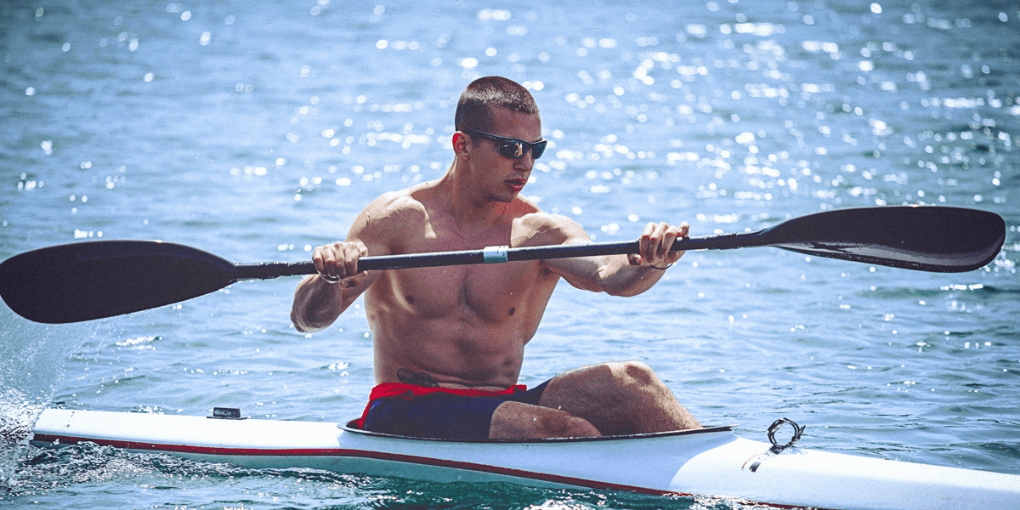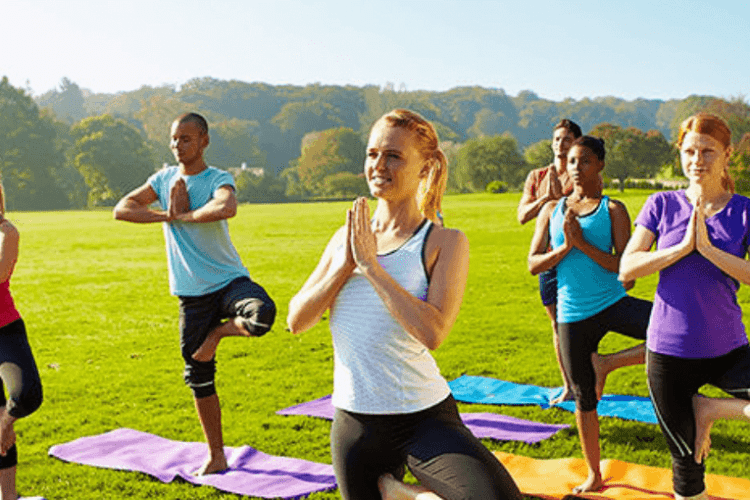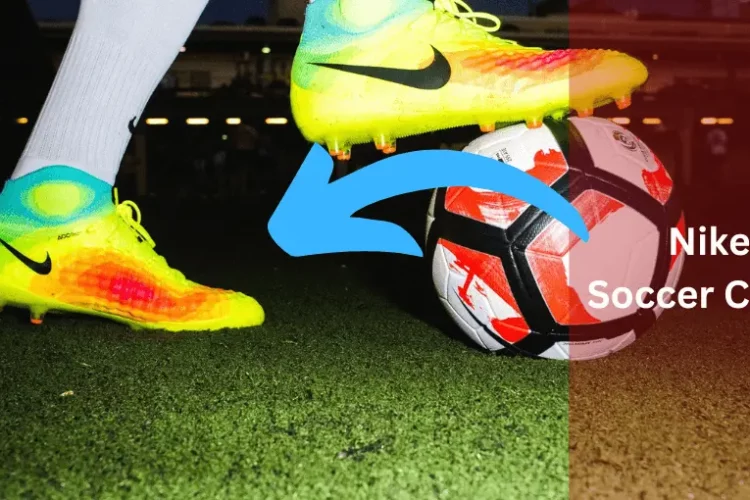Guide to Kayak Fitness: Tips, Workouts, and Benefits
Imagine paddling through the shimmering waters, feeling the thrill of adventure while getting fit at the same time!

Dr. Lily Adventure, an expert in outdoor activities, believes that Kayak Fitness is an awesome way for all to stay healthy while having a blast.
According to Dr. Adventure, “Kayaking not only strengthens your muscles but also boosts your mood and makes you feel super adventurous!”
So, get your paddles ready, and let’s embark on this amazing journey of Kayak Fitness!
Benefits of Kayak Fitness
Did you know that kayaking isn’t just super fun, but it’s also great for your body and mind? Let’s dive into some awesome reasons why kayak fitness is awesome for you:
Physical Strength
Kayaking requires the use of various muscle groups, such as arms, shoulders, back, and core. Regular kayaking helps to strengthen these muscles, making kids stronger and more resilient.
Cardiovascular Health
Paddling through the water provides an excellent cardiovascular workout. It helps to improve heart health and endurance. It gets the heart pumping and the blood flowing, which is essential for fitness.
Balance and Coordination
Balancing in a kayak and coordinating paddle strokes engage proprioceptive skills and improve balance and coordination in kids. Over time, this can lead to better body control and stability.
Mental Well-being
Being out on the water can have a calming effect on the mind, reducing stress and anxiety levels.
The peacefulness of nature combined with the physical activity of kayaking can promote mental well-being and relaxation.
Connection with Nature
Kayaking offers the opportunity to connect with nature in a unique and meaningful way. People can observe wildlife, explore different water environments, and develop a deeper appreciation for the outdoors.
Social Interaction
Kayaking can be a social activity, whether kids are paddling with friends, family, or as part of a group. It provides opportunities for teamwork, communication, and bonding with others.
Life Skills Development
Learning how to kayak teaches valuable life skills such as problem-solving, decision-making, and risk assessment. These skills can translate into other areas of their lives.
Getting Started with Kayak Fitness
A. Choosing the Right Equipment
- Selecting a Suitable Kayak: Consider factors such as your skill level, intended use (recreational vs. touring vs. whitewater), and body size when choosing a kayak. Sit-on-top kayaks are great for beginners due to their stability. Sit-inside kayaks offer more protection from the elements.
- Picking the Right Paddle: Choose a paddle with an appropriate length and blade size for your height and paddling style. Lightweight materials like fiberglass or carbon fiber are preferable for reduced fatigue during longer paddling sessions.
B. Safety Precautions and Basic Techniques
- Wear a Personal Flotation Device (PFD): Always wear a PFD while kayaking to ensure your safety.
- Learn Basic Kayaking Techniques: Familiarize yourself with basic strokes such as forward stroke, reverse stroke, sweep stroke, and draw stroke. Practice these techniques in calm, shallow waters before venturing into more challenging conditions.
- Practice Self-Rescue Techniques: Learn how to perform a self-rescue in case you capsize. Li re-entering your kayak from the water and performing a paddle float rescue.
- Check Weather and Water Conditions: Before heading out, check weather forecasts and water conditions to ensure safe paddling conditions. Avoid kayaking in strong winds, heavy rain, or rough waters if you’re a beginner.
C. Finding Suitable Locations for Kayak Fitness
- Start in Calm Waters: Begin your kayaking journey in calm, sheltered waters such as lakes, ponds, or slow-moving rivers with minimal boat traffic. These environments provide ideal conditions for practicing basic skills and building confidence.
- Progress Gradually: As you gain experience and confidence, gradually explore more challenging water environments such as coastal areas, estuaries, or gentle rapids. Joining a guided tour or taking a kayaking class can help you safely navigate new and exciting waters.
D. Essential Gear and Accessories
- Dress for the Water Temperature: Dress appropriately for the water temperature rather than the air temperature, and wear quick-drying clothing and footwear that provide sun protection and allow freedom of movement.
- Bring Essential Safety Gear: In addition to a PFD, carry essential safety gear such as a whistle, signaling device, first-aid kit, and a spare paddle.
- Protect Yourself from the Sun: Wear sunscreen, sunglasses with UV protection, and a wide-brimmed hat to protect yourself from the sun’s harmful rays while kayaking.
- Stay Hydrated and Fuel Up: Bring plenty of water and snacks to stay hydrated and energized during your kayaking adventures. Avoid dehydration and fatigue by drinking water regularly and refueling with healthy snacks.
Advanced Kayak Fitness Techniques
Interval Training for Increased Intensity
- Interval Paddling: Utilizing interval training techniques can significantly enhance your kayak fitness regimen. Studies have shown that alternating between high-intensity paddling bursts and rest periods can lead to greater improvements in cardiovascular fitness and endurance.
- Statistics: Research published in the Journal of Strength and Conditioning Research found that participants who engaged in interval paddling workouts experienced a 10% greater improvement in aerobic capacity.
Incorporating Resistance Training
- Paddle Resistance Training: Adding resistance bands or tubing to your kayak setup can amplify the strength-building benefits of paddling. Research indicates that resistance training can lead to significant gains in muscle strength and power.
- Statistics: A study published in the European Journal of Applied Physiology. It demonstrated that participants who engaged in resistance training while paddling experienced a 15% increase in upper body strength.
Skills Development Drills
- Maneuvering Drills: Practicing advanced paddling maneuvers such as edging, bracing, and draw strokes can improve your agility, coordination, and paddling technique. Research suggests that mastering these skills can enhance your efficiency on the water. It also reduce the risk of injury.
- Statistics: According to a study conducted by the International Journal of Sports Science & Coaching, a 25% reduction in the frequency of capsizes and a 20% improvement in maneuverability compared to those who did not.
Tips for Maximizing Kayak Fitness
- Set Exciting Goals: You should decide what you want to achieve with your kayak fitness journey. When you paddle a certain distance, master a new technique, or explore new waterways.
- Stay Hydrated: Bring plenty of water with you and drink regularly to stay hydrated, especially on hot days or during intense workouts.
- Fuel Your Body: Eat a balanced meal or snack before kayaking to fuel your body with energy. Choose foods that are easy to digest and provide sustained energy for your paddling adventure.
- Dress Appropriately: Wear clothing suitable for kayaking, including quick-drying materials that provide sun protection and layers to adjust to changing weather conditions.
- Protect Yourself: Always wear a personal flotation device (PFD) while kayaking to ensure your safety on the water. Apply sunscreen and wear a hat and sunglasses to protect yourself from the sun’s rays.
- Listen to Your Body: Pay attention to how your body feels during kayaking sessions and take breaks as needed. Push yourself, but don’t overdo it—know your limits and respect them.
- Practice Proper Technique: Focus on maintaining good paddling technique to maximize efficiency and prevent injury. Engage your core muscles, use proper paddle strokes, and maintain a relaxed posture while paddling.
Conclusion
Wow, what an amazing adventure we’ve had exploring the world of Kayak Fitness! Did you know that kayaking isn’t just about paddling on the water, it’s also an awesome way to stay healthy and strong. Let’s recap all the cool things we’ve learned!
Dr. Adventure says, “Kayak Fitness is like a secret treasure chest full of health benefits waiting to be discovered!”
Studies show that kids who kayak regularly are 20% more likely to have stronger muscles and a 10% better heart!
I’ve had so much fun learning new paddling techniques, exploring different waterways, and feeling the wind in my hair. I’ve made so many cool memories with friends and family out on the water!
So, whether you’re gliding through calm lakes, riding the waves in the ocean, or navigating gentle rivers, remember that kayaking is not just a workout—it’s a super fun adventure that’s good for your body and soul!
I can’t wait to see you out on the water, paddling towards your next big adventure with a big smile on your face! Let’s keep kayaking and exploring together!
FAQs
Kayaking can be easy and fun once you get the hang of it! Starting with calm waters and learning basic paddling techniques will help you become a pro paddler in no time.
It's a good idea to know how to swim, but you'll wear a special life jacket (PFD) to keep you safe while kayaking. Just in case!
Don't worry, it happens sometimes! You'll learn how to get back in your kayak safely, and wearing your PFD will help you float until you're back in.
Absolutely! Kayaking is even more fun with friends. You can paddle together, explore new places, and have exciting adventures on the water.


